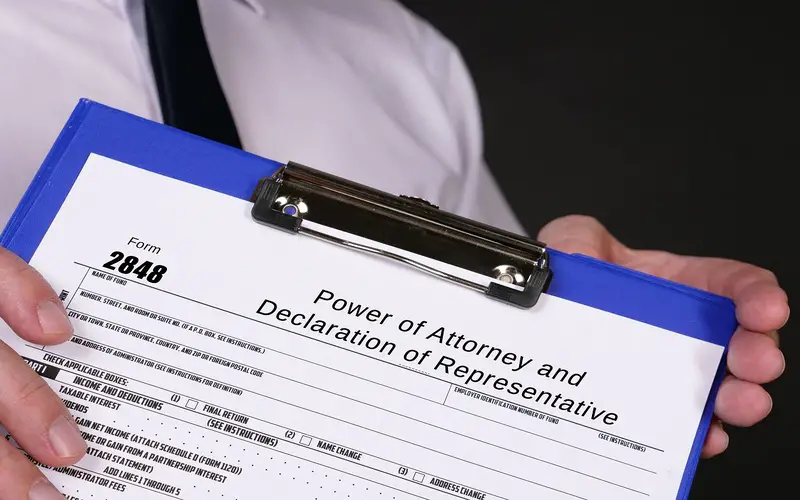Form 2848: Power of Attorney and Declaration of Representative?
Authorize an individual or organization to represent a taxpayer at an IRS audit with Form 2848: Power of Attorney and Declaration of Representative, an IRS form.
The IRS must maintain the confidentiality of your tax return information per federal law. So, you must file Form 2848 with the IRS before anyone else can see your tax information and represent you before the IRS.
The Purpose of Form 2848: Power of Attorney and Declaration of Representative?
Although comparable, Form 2848 differs from a power of attorney (POA). It does not exempt the taxpayer from taxes. By signing Form 2848, you empower a CPA, attorney, or designated agent to execute specific acts on your behalf, such as:
- Get private tax information.
- Sign a tax agreement with the IRS on Form 2848.
- Sign paperwork asking for more time to analyze the tax liability and agree to a tax adjustment.
- Sign a tax return in certain circumstances.
A limited situation is if you have a disease or injury or are outside the US for at least 60 days before filing a return. Request written permission from the IRS to have a tax preparer sign your return if you are on vacation before or after filing your return.
Form 2848 does not authorize you to handle all tax matters. For instance, your agent cannot:
- Approve or arrange a reimbursement check or direct electronic payment into the agent’s account.
- Change their agent (you can authorize this).
A taxpayer can withdraw previously named representatives by writing “REVOKE” across the top of a new Form 2848, signing it, and returning it to the IRS with a copy of the original.
Form 2848: Power of Attorney and Declaration of Representative—Who Can File?
Anyone who wants a valid power of attorney to meet with the IRS can submit Form 2848. Authorized individuals or organizations include attorneys, law firms, CPAs, and enrolled agents. These agents can completely represent taxpayers before the IRS.
The IRS permits family members or fiduciaries to serve as third-party representatives for taxpayers. They can only represent taxpayers before customer service representatives, revenue agents, or other IRS employees. They cannot sign waivers, refunds, or closing agreements. Moreover, they cannot sign taxpayer forms.
Power of Attorney and Declaration of Representative Form 2848: How to File
To make Form 2848 effective, mention the tax form and year for granting power. Fill out a 2848 form accurately using these tips:
- The issue—income taxes, for instance
- Provide a tax form number, such as Form 1040. Saying “all forms” is insufficient.
- Application year—2020. Saying “all years” or “all periods” is inadequate.
Provide particular information about your agent or representative, such as:
- Name, address, phone, and fax
- CPAs, attorneys, enrolled agents, and compensated tax preparers must renew their Preparer Tax Identification Number (PTIN) annually.
- CAF number, which the IRS uses to identify the representative
The form must be signed. To confer authority after filing jointly, each spouse must file a separate Form 2848 to select a representative (not necessarily the same person).
The IRS website has all Form 2848 pages.
Form 2848 versus 8821
Form 2848 authorizes a power of attorney to represent a taxpayer before the IRS, while Form 8821 authorizes someone to access confidential information without representation. For instance, Form 8821 can be used to exchange tax information with your lender while applying for a mortgage.
Conclusion
- IRS Form 2848 enables individuals or groups to represent taxpayers before the IRS.
- Lawyers, CPAs, and enrolled agents are authorized representatives.
- Signing Form 2848 and authorizing representation does not absolve taxpayers of tax liability.












































